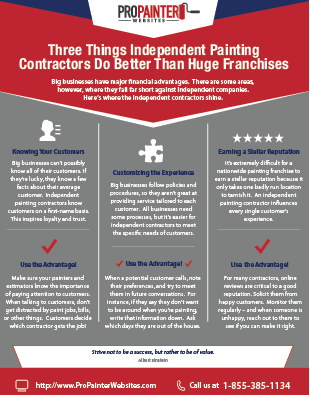Weather Condition'S Result On Commercial Outside Painting: Essential Expertise For Success
Weather Condition'S Result On Commercial Outside Painting: Essential Expertise For Success
Blog Article
Material Composed By-Cash Hollis
When you're preparing a commercial exterior painting job, do not underestimate the impact of weather on your results. You require to consider aspects like temperature, moisture, and rainfall, as they can make or break your paint task. As an example, did you know that ideal problems call for details temperature level ranges and moisture degrees? Stopping working to keep track of these elements can lead to irregular coatings and even damage to fresh paint. Understanding these components is vital to achieving a durable, expert end result. So, what specific weather conditions should you watch out for?
Temperature level Considerations
When it involves industrial exterior paint, temperature level plays a crucial function in the end result of your task. If you're painting in severe heat, the paint can dry too rapidly, bring about issues like bad adhesion and irregular finishes. You intend to aim for temperatures between 50 ° F and 85 ° F for the best results. Listed below 50 ° F, paint may not treat effectively, while above 85 ° F, you run the risk of blistering and splitting.
Timing your task with the best temperatures is crucial. Start your job early in the morning or later in the mid-day when it's cooler, specifically during hot months.
Also, take into consideration the surface temperature level; it can be substantially more than the air temperature level, particularly on warm days. Use a surface area thermometer to examine this before you begin.
If exterior painting contractor portland are unpredictable, watch on the weather prediction. Sudden temperature decreases or heat waves can thwart your strategies. You do not want to start repainting just to have the conditions transform mid-project.
Moisture Levels
Humidity levels considerably impact the success of your industrial external paint task. When the humidity is too expensive, it can hinder paint drying and treating, leading to a variety of problems like poor adhesion and complete high quality.
If you're planning a job throughout wet problems, you could discover that the paint takes longer to completely dry, which can expand your job timeline and boost costs.
Alternatively, low moisture can additionally position challenges. Paint may dry out also quickly, protecting against correct application and causing an uneven surface.
You'll wish to keep an eye on the humidity levels very closely to ensure you're functioning within the optimal array, generally in between 40% and 70%.
To obtain the very best results, consider making use of a hygrometer to determine moisture prior to starting your task.
If you find the degrees are outside the optimum range, you might require to adjust your timetable or choose paints designed for variable conditions.
Constantly speak with commercial painters contractors portland for particular suggestions on humidity resistance.
Precipitation Impact
Rain or snow can substantially disrupt your commercial outside paint plans. When precipitation happens, it can wash away fresh used paint or develop an unequal surface. Preferably, you want to select days with completely dry climate to guarantee the paint sticks effectively and cures effectively. If you're caught in a shower, it's ideal to stop the task and await problems to enhance.
In addition, snow can be a lot more harmful. Not only does it create a damp surface, however it can also lower temperatures, making it tough for paint to completely dry. This can cause problems like peeling off or blistering down the line.
interior paint color consultant to check the weather report prior to beginning your project. If rain or snow is anticipated, consider rescheduling.
Always bear in mind to enable ample drying time between layers, specifically if the weather condition stays unpredictable.
link webpage , keeping an eye on the weather is important for an effective industrial external painting job. By keeping an eye on temperature, humidity, and rainfall, you can make sure the most effective conditions for application and curing. Bear in mind to intend your job around beneficial climate and constantly follow supplier standards. With the ideal method, you'll accomplish a lasting, attractive finish that can withstand the elements. Don't let the climate capture you off-guard-- stay educated and paint clever!
